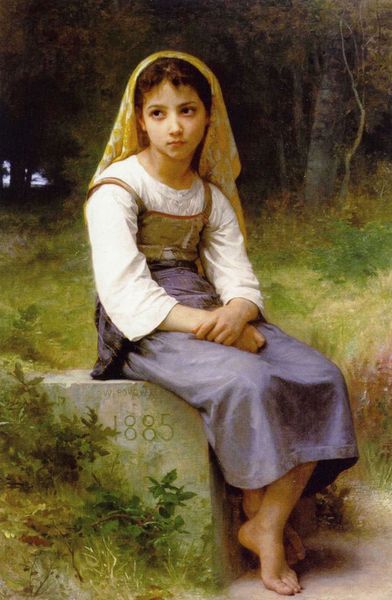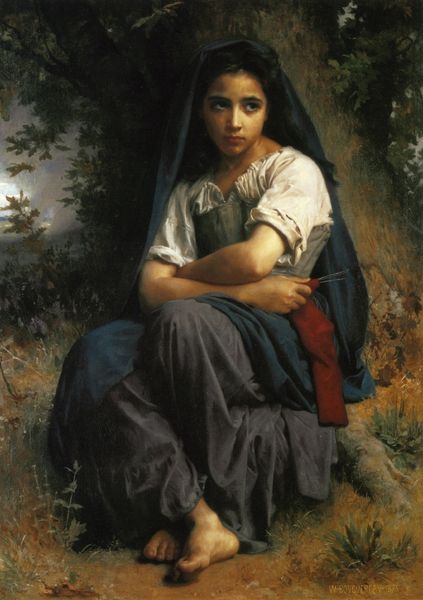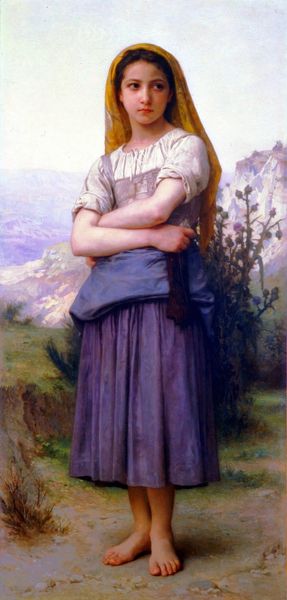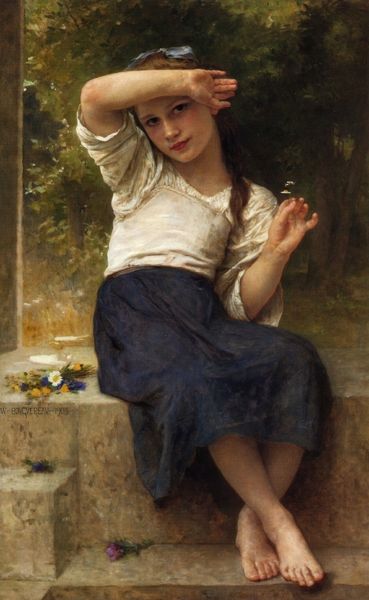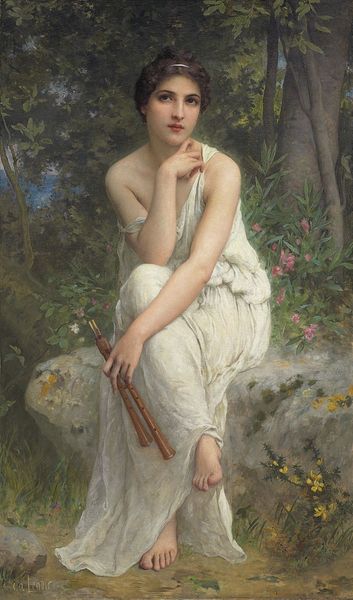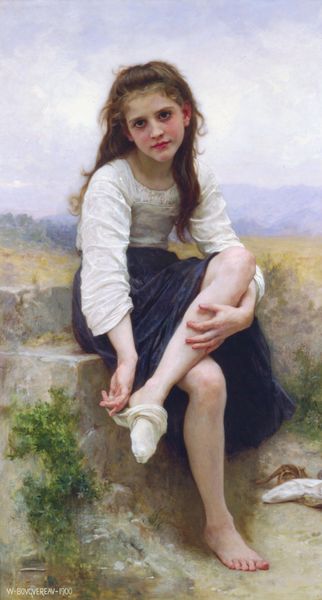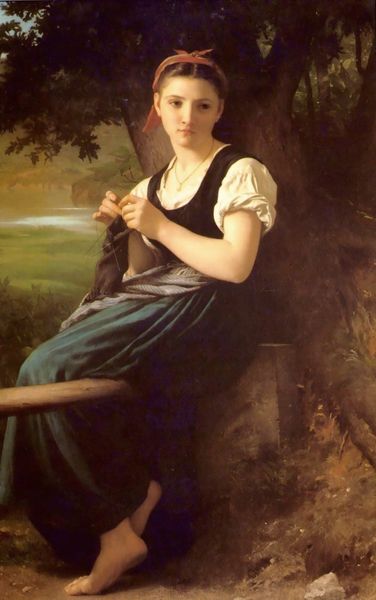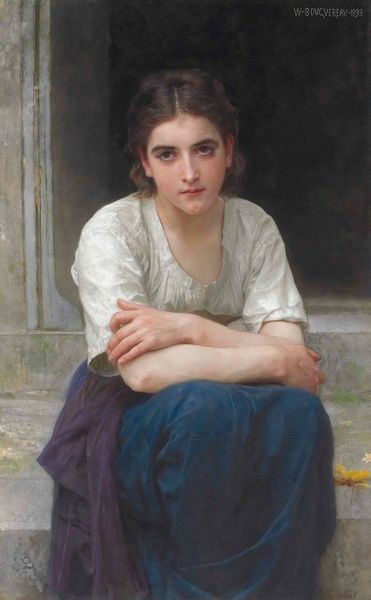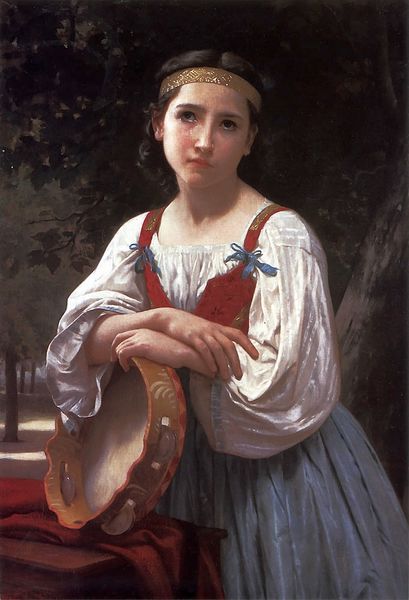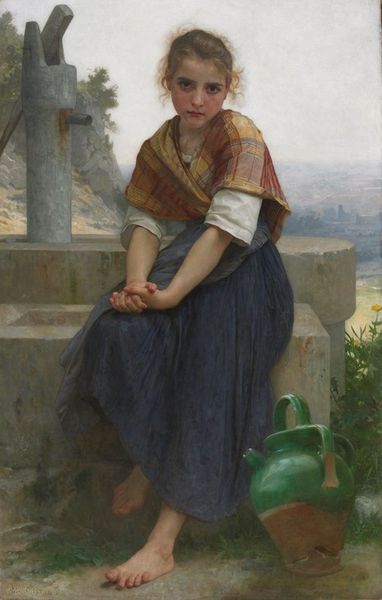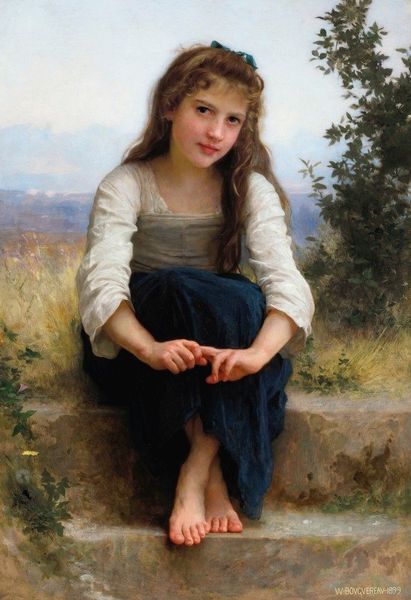
Copyright: Public domain
William Bouguereau painted “At the Edge of the Brook” with oil on canvas. The painting's formal structure is meticulously balanced, using light and shadow to direct the viewer's eye. The soft, diffused light enhances the texture of the girl's skin and clothing. Consider the semiotic elements within the piece. Bouguereau’s choice to depict this young girl with the compositional elements create a structure that invites contemplation on innocence and beauty. Her pose, arranged with careful attention to the classical contrapposto, is echoed in the surrounding environment. The brook's edge, a threshold between two states, mirrors her own transition from childhood to adolescence. Bouguereau uses formal elements not just to depict a scene but to create a structured dialogue about perception and the complex interplay between the observer and the observed. Bouguereau’s academic technique and its emphasis on realism serve to reinforce the cultural codes of beauty and virtue prevalent in the 19th century.
Comments
No comments
Be the first to comment and join the conversation on the ultimate creative platform.
